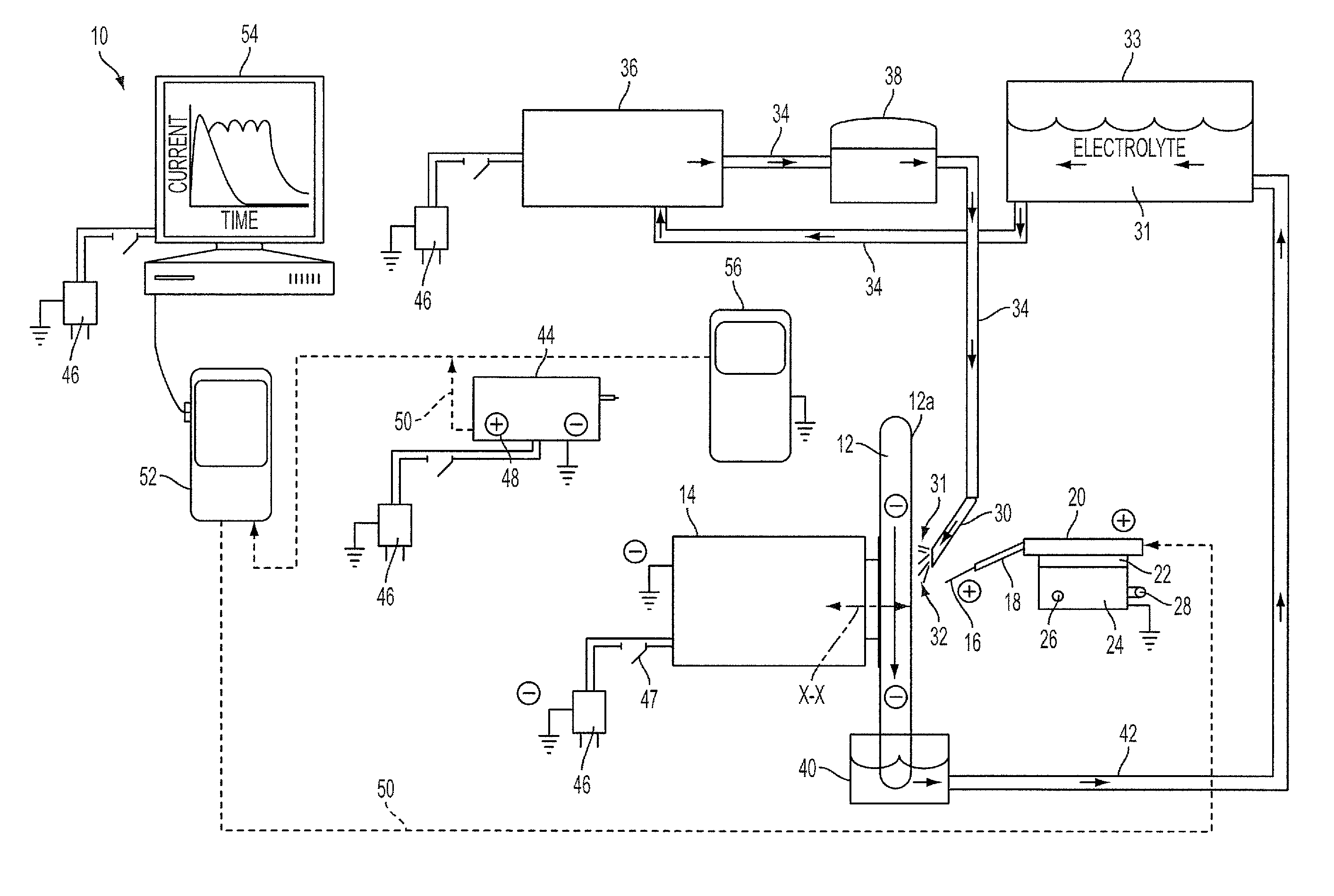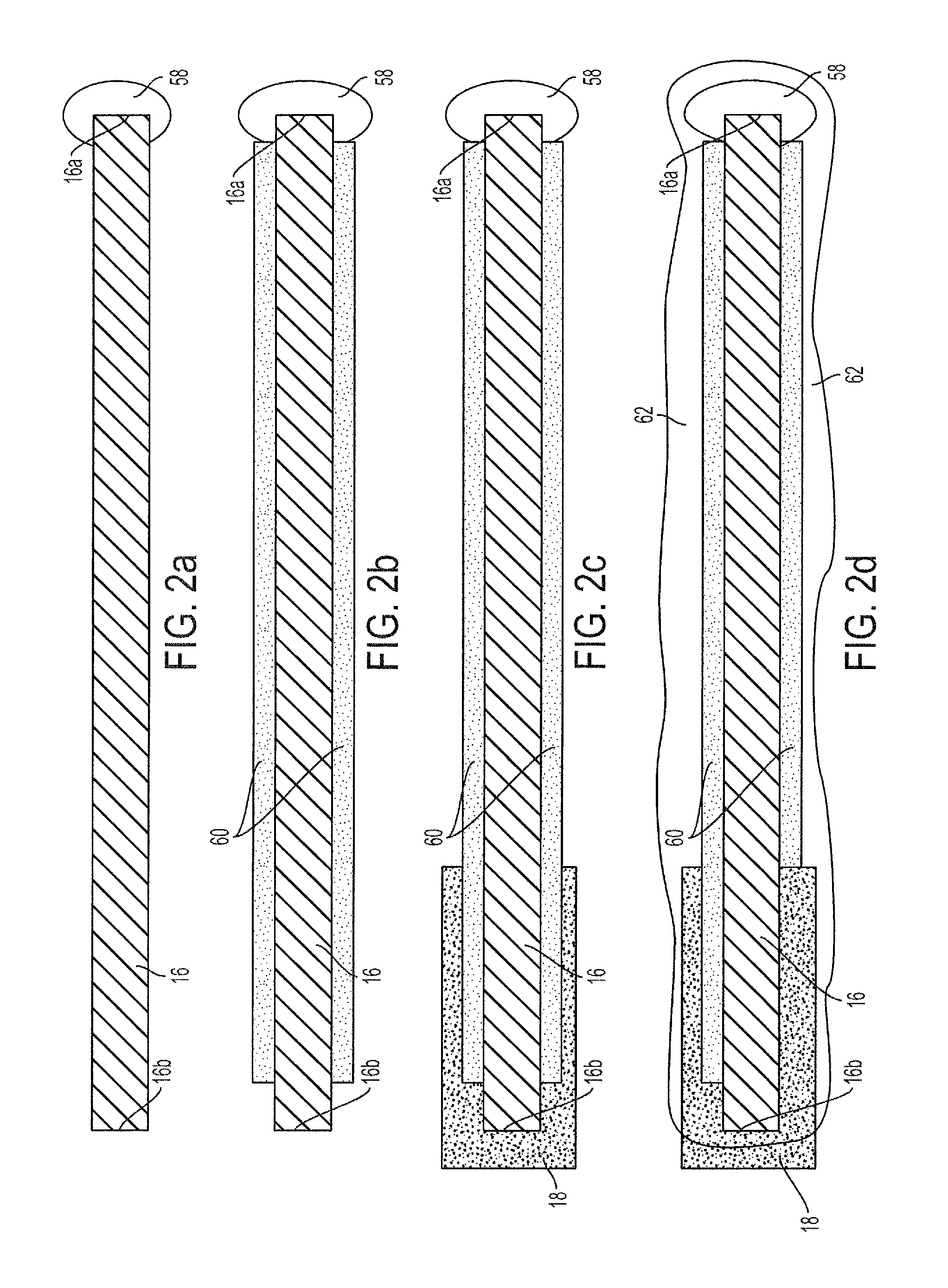Electrochemical Machining Process
a technology of electrochemical machining and bil, which is applied in the direction of manufacturing tools, electrical-based machining electrodes, electric circuits, etc., can solve the problems of o and osub>, excessive gas bubble formation, and undesirable high hydrolysis rate of electrolyte, and achieve fast machining rate, prevent adverse machining effects, and constant removal of bil
- Summary
- Abstract
- Description
- Claims
- Application Information
AI Technical Summary
Benefits of technology
Problems solved by technology
Method used
Image
Examples
example 1
[0053]A ceramic blade blank approximately (3 mm×7 mm×300 microns) was machined as described below using a work piece made of doped silicon carbide as described in commonly owned U.S. Pat. No. 6,616,890.
[0054]A first removable, electrically insulating coating comprising silicone material 58 was applied to the end 16a of the above-described blade blank 16 where machining was intended to occur. The blank 16 was then dipped into a Nickel plating bath to metalize the uncoated areas of the work piece to a plating thickness of 25-50μ. The plating was a continuous, lustrous coating of Ni 60. The plated work piece was then mounted in a brass holder 18 using an electrically conductive epoxy and then coated with a second removable, electrically insulating coating comprising wax 62 which covered the plating 60 as well as the first coating 58.
Preparing the Machine Set-Up
[0055]The brass holder 18 was then mounted into an electrically conductive steel holder of an X-Y mechanical, micrometer positi...
PUM
| Property | Measurement | Unit |
|---|---|---|
| constant distance | aaaaa | aaaaa |
| linear resistance | aaaaa | aaaaa |
| voltage | aaaaa | aaaaa |
Abstract
Description
Claims
Application Information
 Login to View More
Login to View More - R&D
- Intellectual Property
- Life Sciences
- Materials
- Tech Scout
- Unparalleled Data Quality
- Higher Quality Content
- 60% Fewer Hallucinations
Browse by: Latest US Patents, China's latest patents, Technical Efficacy Thesaurus, Application Domain, Technology Topic, Popular Technical Reports.
© 2025 PatSnap. All rights reserved.Legal|Privacy policy|Modern Slavery Act Transparency Statement|Sitemap|About US| Contact US: help@patsnap.com



